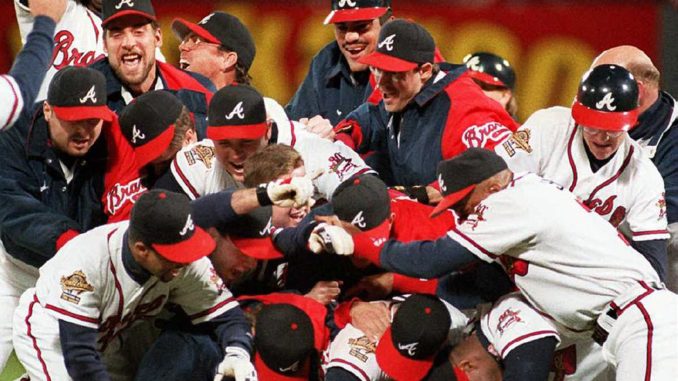
Also in this series: The Best Transaction Made By Every Braves General Manager, Part 1: Boston and Milwaukee
In part one, I looked at the people who were making the baseball operations decisions for the early years of the franchise, a time when then the modern concept of a general manager — a team official hired by ownership specifically to handle roster construction — didn’t exist or was just coming into being. Before then, personnel decisions were typically handled by the manager or the owner/team president, or some combination of both.
By the time the Braves moved to Atlanta however, every team had a general manager. John McHale, who would later go on to co-found the Montreal Expos, was the struggling GM of the Braves when the team moved to the South. The Braves had won the World Series in 1957 and a National League pennant in 1958 under McHale’s predecessor John Quinn, but an aging roster and a languishing farm system combined to sink attendance in Milwaukee. While the city and die-hard fans fought to keep the Braves, new ownership under William Bartholomay prevailed to move the Braves to Atlanta and the brand new Atlanta Stadium, giving the South its first major league baseball team.
Paul Richards, 1966-1972
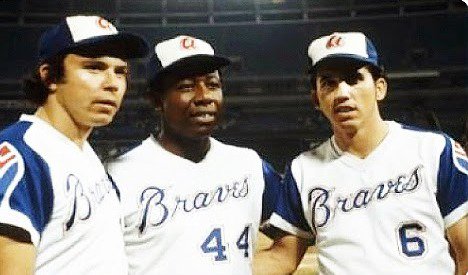
While McHale would make the move with the Braves to Atlanta, Bartholomay was already looking at making a change, bringing former Baltimore and Houston GM Paul Richards into the organization as Director of Player Personnel. Before the end of the season, McHale would be out as general manager and Richards in.
Richards was already a popular man in Atlanta thanks to a successful tenure as a player and manager for the Atlanta Crackers minor league team that preceded the Braves as Atlanta’s professional baseball team, leading the Crackers to a Southern Association championship in 1938. Today looked at as one of the great innovators of the game (he utilized on-base percentage before it was an a official stat, tracked pitch counts, and helped the knuckle ball make a resurgence by inventing the over-sized catcher’s mitt), Richards already had a reputation as a keen evaluator of young talent, something that would bear out in his tenure with Atlanta. While the Braves would win the NL West pennant in 1969 under his oversight (losing in the NLCS to the “Miracle Mets”), the team would otherwise finish in the middle of the pack every season despite an influx of talent and the continued presence of Hank Aaron in the line-up. Richards would end up being dismissed midway through the 1972 season, replaced by his longtime protegé Eddie Robinson.
Best Transaction: Drafted 3B Darrell Evans from the Oakland Athletics in the 1968 rule 5 draft. Richards was dismissed as general manager for the Orioles by ownership in part by his willingness to spend large amounts in bonuses for amateur players. Richards understood that a steady pipeline of talent was necessary to build and maintain ballclubs, and left no stone unturned. That included the rule 5 draft, and the Braves acquired one of their best and underrated players in this way, picking up third baseman Darrell Evans. Not appreciated in his time due to his low batting average. Evans would be a star in today’s game with his above average defense at third base, high on-base percentage, and power.
Eddie Robinson, 1972-1976
Robinson was in the middle of a long major league playing career in 1950 when he was traded to the Chicago White Sox, then being managed by Paul Richards. This would start a long friendship between the two men. When Robinson retired from playing after the ’57 season, Richards hired him as a scout with the Orioles. When Richards left Baltimore to run the expansion Houston Colt .45s, he brought Robinson with him as assistant general manager. Richards would again find room for Robinson in his organization when he hired him away from the Kansas City A’s to run Atlanta’s farm system. Thus it was in 1972, when the team relieved Richards after several mediocre seasons, that Robinson was there to take the reins.

Despite Robinson’s efforts (or perhaps because of them — he made several questionable trades), the Braves remained mired in the middle of the pack through the 70s. It was Robinson who undertook the unenviable task of sweeping away the last of the championship Milwaukee teams, including trading Hank Aaron to the expansion Milwaukee Brewers so the Hammer could spend his last season in the city that saw his prime years. After Ted Turner purchased the Braves in 1976, Robinson was kept on but he decided to leave the Braves after the season to take an opening as general manager of his hometown Texas Rangers.
Best Transaction: Drafted C Dale Murphy in the 1st round (5th pick) of the 1974 amateur draft. Robinson’s transactions with Atlanta read like a list of what-could-have-beens. Robinson traded out Dusty Baker when it appeared that his career was starting to go on the downside — he a saw career resurgence with the Dodgers. He traded first base prospect Andre Thornton in one of his first moves; Thornton would go on to be an All-Star with the Cleveland Indians. He purchased the contract of slugger Dick Allen coming off a season in which he lead the AL in home runs with the White Sox, but Allen refused to report to the Braves.
But Robinson did not miss with his first round pick in 1974, snagging Dale Murphy out of Woodrow Wilson High School in Oregon. Within two years Murphy would make his major league debut, and develop into the franchise cornerstone of the 80s, going to 7 All-Star games and winning back-to-back MVPs in 1982 and ’83. Robinson by that time would be a freelance talent evaluator and consultant, a job that would have him involved in the game until he finally retired in 2004, one of the longest professional baseball careers ever. Even after retiring, Robinson worked on lobbying the MLBPA and the Commissioner’s Office to fund a pension for players who played before the 1979 rule change that vested players in the major league pension plan upon their major league debut. Robinson passed away in 2021 at the age of 101.
John Alevizos, 1976
For his first general manager hire, Ted Turner tapped Boston-area businessman and former Red Sox vice-president John Alevizos. The two were united in believing that the groundbreaking Andy Messersmith/Dave McNally arbitration hearing that gave players the right to free agency presented an opportunity for the Braves to rapidly change their fortunes if they moved aggressively. To that end, Alevizos signed Messersmith as the opening salvo to the Free Agent Era. The two also openly coveted San Francisco outfielder Gary Matthews, and Alevizos’s public remarks ran afoul of Commissioner Bowie Kuhn’s edicts on tampering. The Braves were fined $10,000 but more importantly were forced to forfeit their first-round draft pick. Alevizos only lasted in the job for the six months of the regular season, resigning when he decided to go back to business. Alevizos would later attempt to purchase the Montreal Expos and move them to Connecticut, an effort that ultimately failed when Commissioner Bud Selig conspired to push the team to Washington D.C.
Best Transaction: Signed RHP Andy Messersmith as a free agent. Alevizos’s short tenure was marked by two major transactions. The first was the signing of Messersmith, who made the All-Star team in his first year with the club and famously wore the word “Channel” instead of his name on the back his number 17 jersey to help promote owner Ted Turner’s SuperStation WTCG cable enterprise (the forerunner to TBS) before National League president Chub Feeney stepped in to put the kabash on that bit of advertisement. The other transaction was trading Darrell Evans, who at age 29 was having the worst season of his career, to the Giants. Evans would re-establish himself with San Francisco, and play for 12 more seasons.
Bill Lucas, 1976-1979
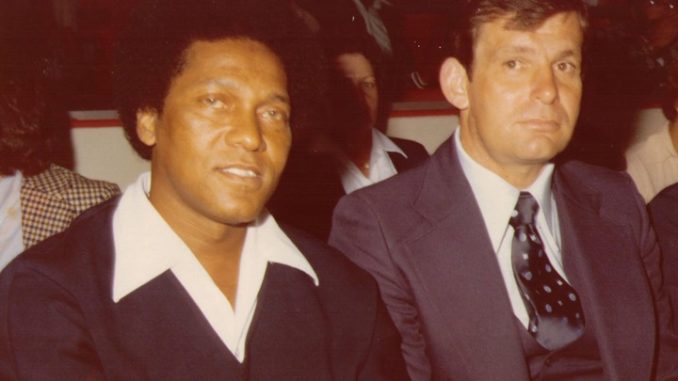
For his third general manager of 1976, Turner elevated Bill Lucas from farm director. Lucas was a Braves lifer, playing in the organization as a minor leaguer until 1964. The Braves hired him for their public relations department, putting him in change of outreach to black communities, a key position as the team transitioned from Milwaukee to Atlanta. Lucas excelled in the role, and was promoted to player development and eventually became farm director, replacing Eddie Robinson when he was promoted to general manager. After Alevizos left the organization, Bill Lucas made history as the first African-American to run a major league front office.
Like Richards and Robinson, Lucas firmly believed that great teams had to be built from the farm up, a philosophy that didn’t always mesh with the style of the mercurial Ted Turner. While Turner did sign away the coveted Gary Mathews after the 1976 season (after which Turner and the Braves got into trouble again for tampering thanks to loud comments Turner made to the Giants owner at a World Series cocktail party boasting that he was going to sign Mathews no matter what the Giants offered him), Lucas’s tenure as general manager was marked by the methodical acquisition of young talent. Tragically, Lucas would not see the fruit of his efforts, passing away suddenly during the 1979 season from a cerebral hemorrhage, suffered just hours after congratulating future Hall of Famer Phil Niekro on his 200th career win. At his funeral, Dale Murphy would eulogize Lucas, saying “Bill’s dream was for this organization to be a success. It is our sacred honor to be chosen to fulfill his dream.” In 1982 the Braves would do just that, winning the NL West pennant on the strength of the talent that Lucas acquired and developed in his years as farm director and general manager.
Best Transaction: Drafted 3B Bob Horner in the 1st round of the 1978 amateur draft. Lucas made several astute draft picks during his tenure, but the addition of Horner was the most impactful. Horner is still spoken of in hushed tones by fans for his light-tower power and his 1978 Rookie of the Year campaign that saw him go straight from the Arizona State campus to Atlanta-Fulton County Stadium without spending a day in the minor leagues and hitting a home run off future Hall-of-Famer Bert Blyleven in his first game. Horner would have his best season in 1982 on the NL West championship team.
John Mullen, 1979-1985
With the organization in a state of mourning after the sudden death of Bill Lucas, Turner turned to Houston Astros Assistant General Manager John Mullen to take over the front office. Mullen had been with the Braves organization most of his professional career, starting with the club in 1947 while it was still based in Boston. Houston lured him away in 1967 and he was a critical piece of the front office during their early years, but came home when Turner asked him to take over in the middle of the 1979 season.
Mullen would end up overseeing an NL West pennant team in 1982 with a roster that was mostly composed of talent procured by prior regimes, though he did make a savvy trade for first baseman Chris Chambliss, a move that allowed Dale Murphy to move to the outfield, where he would win MVPs and Gold Glove awards. A not-quite as saavy trade saw the Braves switch out Gary Mathews with one year remaining on his contract for Bob Walk. Walk would end up putting together a solid major league career, but at the time the trade it was an obvious salary dump, and fans were left to wonder what could have happened in ’82 with the dependable Mathews in the outfield rather than the inconsistent Walk in the rotation.
To say Mullen’s trade record during his time serving as the Braves GM is uneven would be an understatement. The most bizarre trade was one that brought Cleveland right-hander Len Barker to Atlanta at the 1983 trade deadline for 3 players-to-be-named-later. Barker was solid for Atlanta down the stretch, but not good enough for the Braves to escape a second-place finish. Then fans were shocked to find out that the three players going back to Cleveland included one of Mullen’s best draft picks, outfielder Brett Butler, who by 1983 had established himself as a viable major league lead-off hitter.
Best Transaction: Drafted LHP Tom Glavine in the 2nd round of the 1984 amateur draft. While Mullen’s trade and free agent record is spotty at best, he and his staff certainly had a gift for spotting amateur talent. Among the players that would go on to have a significant impact acquired by draft of amateur free agent signing under Mullen were Butler, Jim Acker, Duane Ward, Paul Assenmacher, Zane Smith, Ron Gant, Mark Lemke, Jeff Blauser, Tommy Greene, and David Justice (another pick, 1979 first rounder Brad Komminsk, is widely considered the biggest draft bust for Atlanta, but to be fair I think every other team would have drafted Komminsk with that pick).
But no pick was bigger than 1984 2nd-rounder Tom Glavine. It’s fair to say that there would have been no big run in the 1990s without Glavine, a Hall-of-Famer and two-time Cy Young Award winner, and the starting pitcher in Game 6 of the 1995 World Series that was Atlanta’s only professional sports championship until the Atlanta United of Major League Soccer won one in 2018.
After the team crashed in 1985 to a 66-96 record in a season they were expected to contend, Mullen was replaced by former manager Bobby Cox. Mullen however stayed with the organization in an advisory role through the 1990 season. Mullen passed away at the age of 66 in April 1991, and wouldn’t have the opportunity to see the seeds he had planted with his series of good drafts fully take root during the Braves run of National League dominance.
Bobby Cox, 1986-1990
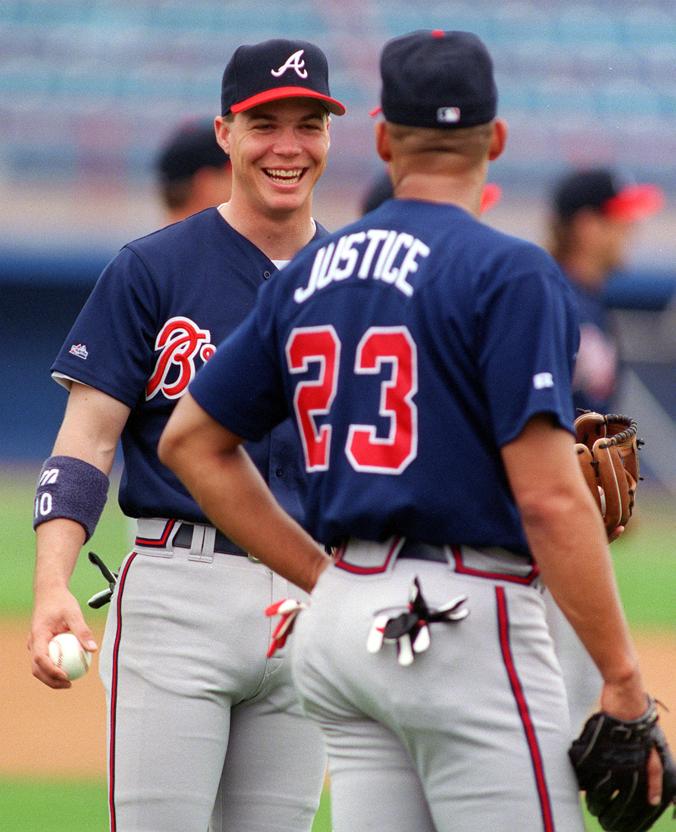
With Mullen unable to extend the success of the 1982 team, Turner brought in former manager Bobby Cox to try to change the team’s fortunes, simultaneously pairing him with new team president Stan Kasten. Kasten was in the midst of having success with the Turner-owned Atlanta Hawks. Cox and Kasten were on the same page regarding how to rebuild the Braves — scouting, drafting, signing and development of young players. With Mullen still involved in the front office, the team continued what would turn out to be an impressive run of draft successes as well as expanding the Braves’ reach into Latin America. The Braves on the field however were a lackluster bunch, and it speaks to the discipline of everyone involved, including owner Ted Turner, that the treasure trove of young talent wasn’t flipped in quick-fix trades.
Cox also had the unenviable task of shedding the few stars from the old regime to make way from the young. Bob Horner and Chris Chambliss were allowed to leave as free agents in 1986, but many fans were most upset when Cox traded star Dale Murphy to Philadelphia in 1990. The move opened up right field to move David Justice to the position.
Best Transaction: Drafted SS Chipper Jones in the 1st round of the 1990 amateur draft. There’s a lot of contenders for best transaction of Cox’s tenure, most notably perhaps the best trade for the Braves franchise ever, moving veteran right-hander Doyle Alexander to Detroit in 1987 for a minor league pitcher named John Smoltz. But Cox’s run of good drafts crested with his last. The Braves had the first overall pick of the 1990 draft on the strength of their NL-worst 63-97 record the year before. The consensus top talent of the draft was Texas high school right-hander Todd Van Poppel, but Van Poppel famously told the Braves not to draft him — he wanted to pitch for a contender, and if the Braves drafted him he would instead take his talents to college. There was no consensus on the rest of the draft, and Cox took a chance on a Florida high school shortstop who would go on to be the best Braves position player since Hank Aaron.
In addition to Jones, the Cox era saw the drafting of key performers like Kent Mercker, Brian Hunter, Mike Stanton, Steve Avery, Mark Wohlers, Tony Tarasco, Ryan Klesko, and the signing of amateur free agent Javy Lopez. Cox also signed free agents Lonnie Smith and Greg Olson, traded for Charlie Leibrandt, Jeff Treadway, Marvin Freeman, and Francisco Cabrera, and purchased Vinny Castilla and Armando Reynoso from the Mexican League.
During the 1990 season, Turner had seen enough of manager Russ Nixon after 65 games, and Cox moved to the dugout, simultaneously acting as both manager and general manager. After the season, Kasten reportedly asked Cox which position he wanted to keep; he chose to stay in the dugout, and Kasten moved to hire a new general manager.
John Schuerholz, 1990-2007
The Braves finished in last place in 1990, but around baseball people were noticing the enviable stockpile of talent that the Braves were accumulating. This allowed Kasten to have his pick of candidates for the general manager’s job, and he settled on Kansas City GM John Schuerholz. Schuerholz had put together a championship team in 1985 with Kansas City, but the team was starting on a slow decline. Schuerholz jumped at the chance to take over a team apparently set up for success, though few expected that success to come immediately in 1991.
Schuerholz saw that team defense was a weakness, and an especially harmful one given that the team was trying to rebuild around its young pitching. To this end, he signed a number of relatively low-priced free agents with good defensive reputations — Terry Pendleton for third base, Rafael Belliard for shortstop, and Sid Bream for first base. Seeing a need for both improved outfield defense and a lead-off hitter, he traded for Montreal’s Otis Nixon during spring training. The improved defense helped start the dominance of two future Hall-of-Fame pitchers, Tom Glavine and John Smoltz and Pendleton ended up being the free agent bargain of the year, winning MVP honors after hitting .319/.363/.517 and helping lead the young Braves to a World Series appearance, falling just short of the Minnesota Twins in an epic Game 7.
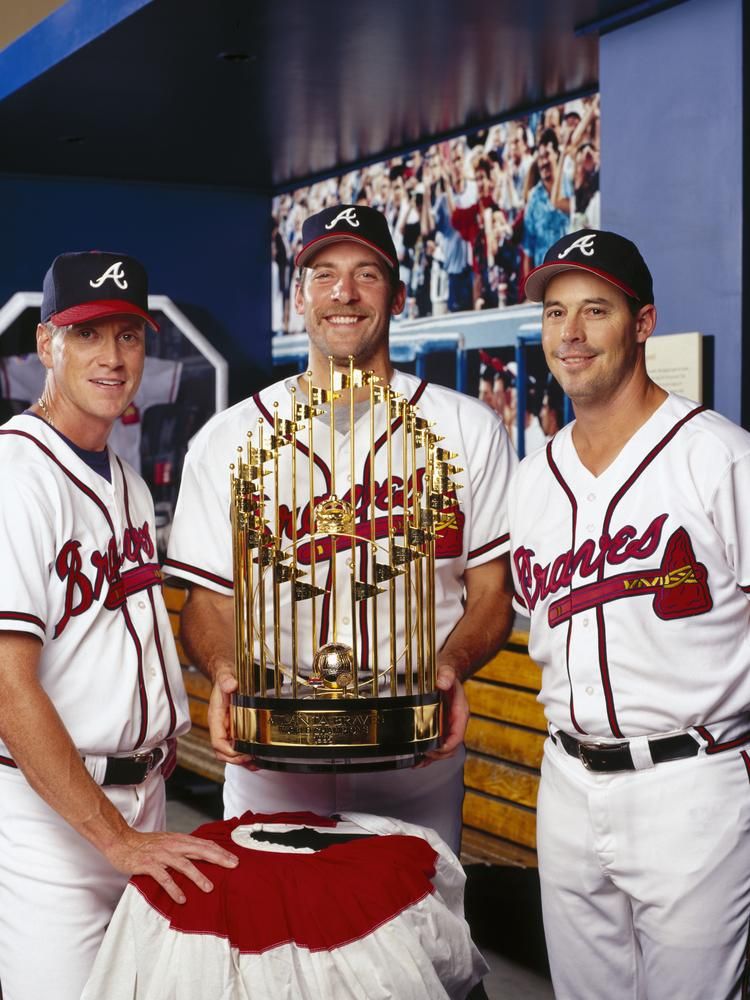
Thus began a long stretch of National League dominance of which it seems unlikely any professional sports team will see again. Atlanta won 14 consecutive division titles from 1991-2005, appearing in 9 NL Championship Series and 5 World Series and winning it all in 1995. During this time Schuerholz demonstrated a keen ability to blend in young talent from the farm system onto championship teams and plugging holes with quality free agents and trades.
Best Transaction: Signed RHP Greg Maddux as a free agent (1993). The 1992 Cy Young Award went to Cubs righty Greg Maddux, coming at just the right time for him as he entered free agency at the age of 27. Pursued by seemingly every team, Schuerholz was able to sell Maddux on the Atlanta Braves, now coming off its second consecutive World Series appearance. Already considered the best rotation in baseball, Maddux took the group over the top and proceeded to have arguably the best six-year run of dominance by any pitcher ever, going 107-42 with a 2.15 ERA in be middle of the high-offense, steroid-fulled 1990s.
This wasn’t the only great transaction by Schuerholz. The 1995 World Series win set up by a deadline trade in 1993 when he traded three prospects to San Diego for first baseman Fred McGriff, and his 2004 trade for starter Tim Hudson would both be the jewel in the crown of most GMs. However, one of the downsides of sustained winning is poor draft slotting, and by-and-large Schuerholz’s drafts were mostly unremarkable. He saved his best one for his last however, snagging future stars Jason Heyward and Freddie Freeman with the Braves’ first two picks in the 2007 draft.
Frank Wren, 2007-2014
Former Orioles GM Frank Wren joined the Braves organization in 1999 as an assistant to John Schuerholz. With many of Schuerholz’s front office disciples such as Dayton Moore and Dean Taylor leaving the organization to take GM positions on other teams, Wren became Schuerholtz’s heir apparent. After a disappointing third place finish in a 2007 season that saw Schuerholz make his most disastrous trade — a deadline deal to add first baseman Mark Teixeira for five prospects, four of whom would go on to have productive major league careers — Schuerholtz moved on and up to Vice Chairman and Wren was promoted to general manager.
Wren inherited an aging team and a depleted farm system. The Braves starting rotation, once the envy of all of baseball, was filled with an aging John Smoltz, Tim Hudson, and Tom Glavine, who had returned to the team after a five year stint with the Mets. While the likes of Chipper Jones, Andruw Jones, and Brian McCann would keep the Braves from being truly horrible, the team settled into a run of mediocrity that wouldn’t start to reverse until the rise of young stars Jason Heyward, Freddie Freeman, and Andrelton Simmons. Wren would desperately try to band-aid the major league roster with free agents, but the free-wheeling days of Ted Turner had passed, with the team coming under the custodianship of corporate entities AOL/Time Warner and then Liberty Media and Wren rarely was able to obtain a player that made an impact.
Best Transaction: Signed OF Ronald Acuña Jr. as an amateur free agent (2014). Wren wouldn’t get to see the fruits of the two best transactions, the signings of outfielder Ronald Acuña Jr. and infielder Ozzie Albies. Wren was fired by Schuerholz after the 2014 season.
Coming off a 2013 that saw Atlanta win their first division title in 8 years, the Braves were rocked in spring training by UCL tears to two projected starting pitchers, Kris Medlen and Brandon Beachy. In desperation, and because after a series of tepid drafts the farm system was once again almost barren of pitching depth, Wren convinced ownership to open the purse strings to acquire free agent pitcher Ervin Santana. While Santana wasn’t bad, his signing represented the last in a string of free agent signings that failed to make an impact. Given that the Braves had long believed that sustained success was built through the farm, it’s easy in retrospect to see that Wren’s time would come to a close.
Before Wren left however, the team made it’s biggest strides in Latin American scouting and talent acquisition. Wren brought in Johnny Almaraz in 2007 to revamp the team’s international scouting department and the move saw almost immediate dividends when it signed right-hander Julio Teheran out of under-scouted Colombia. Under Almaraz, the Braves would sign future major leaguers like Jose Peraza, Johan Camargo, Ozzie Albies, and Acuña.
John Hart, 2014-2015
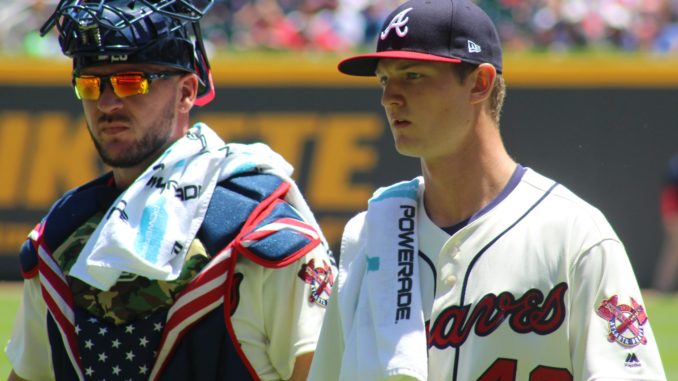
In the aftermath of Wren’s ouster, the team’s braintrust of Schuerholtz, team president Terry McQuirk, and special assistant Bobby Cox turned outside the organization and tabbed longtime Cleveland and Texas GM John Hart. Hart was given the title of Vice-President of Baseball Operations and the general managers position technically remained open. While Hart assumed those responsibilities, it was an open secret that assistant general manager John Coppolella, who had been with the Braves organization in various roles since 2006, was heavily involved in decision-making and was likely being groomed for the role.
When Hart took over the franchise, the team was one year away from pending free agencies for star outfielders Justin Upton and Jason Heyward. Hart was able to move Heyward on for promising right-hander Shelby Miller and replaced Heyward with veteran Nick Markakis in free agency. At the time, Hart indicated that the team would not go on a Houston Astros-style complete rebuild. That changed however at the Winter Meetings and the San Diego Padres made an offer for Justin Upton that included talented left-hander Max Fried. Hart bit and the team was then on for a complete overhaul. Slugger Evan Gattis was traded to Houston, and at the end of spring training beloved closer Craig Kimbrel was shipped off along with free agent disappointment B.J. Upton to clear salary and obtain another draft pick.
Best Transaction: Drafted RHP Mike Soroka in the first round of the 2015 draft. The first draft of the rebuild would be critical to how well the Braves would emerge on the other side. The Braves had extra picks thanks to trades with the Padres and the Diamondbacks, allowing them to take 4 players in the first two rounds. The ramifications of this draft are recent enough that the implications are still being felt, but those four picks — lefty Kolby Allard, righty Mike Soroka, third baseman Austin Riley, and lefty A.J. Minter — have all made their major league debuts. While Allard has since been moved in a trade, the selection of Soroka with the 28th pick overall looks to be one of the steals of the draft. Soroka finished second in Rookie of the Year voting in 2019 and earned an All-Star berth.
John Coppolella, 2015-2017
Immediately after the 2015 season, the Braves officially announced John Coppolella’s promotion to general manager. Coppolella continued the whirlwind overhaul of Braves talent, churning through veterans at the major league level to help inject talent into the farm. The Braves had two more impressive drafts under Coppolella and director of scouting Brian Bridges, using high-round picks to bring in young pitching talent like Ian Anderson, Kyle Muller, Joey Wentz, Bryse Wilson, and Kyle Wright.
Under Hart and Coppolella, the Braves became more aggressive than ever before in the international arena. Under Hart in 2015, the Braves feverishly traded for international bonus pool room to sign highly regarded prospects Cristian Pache and Derian Cruz. In 2016, the Braves purposely blew through their pool limits to sign an enormous class of international amateurs, headlined by the Venezuelan Kevin Maitan. The zeal with which Coppolella pursued this angle would ultimately prove to be his downfall.
Best Transaction: Traded RHPs Shelby Miller and Gabe Speier to the Arizona Diamondbacks for RHP Aaron Blair, OF Ender Inciarte and SS Dansby Swanson (2015). One of the hallmarks of the Coppolella era was the acquisition of veteran talent followed by the trade of that talent to acquire more minor league depth. The likes of Bud Norris, Lucas Harrell, Jason Grilli, Erick Aybar, Jhoulys Chacin, Juan Uribe, Jeff Francoeur, and Kelly Johnson (twice!) found their way quickly in and out of the organization. But the most dramatic example of this was the trade that sent Miller to Arizona for prospects Dansby Swanson, Aaron Blair, and outfielder Ender Inciarte.
Miller was coming off the best season of his career with an awful 2015 Braves team, and Arizona felt like he would be the perfect compliment to what they hoped would be a top-notch rotation already featuring recent free agent signee Zach Greinke and Patrick Corbin. Instead, Miller would almost immediately get hurt, and his three seasons with Arizona would amount to only 29 big league starts. Swanson was the centerpiece of the deal for the Braves. The Marietta native and Vanderbilt star had long been coveted by Braves scouts, but he was selected by the Diamondbacks with the first overall pick in the 2015 draft. While injuries and ineffectiveness would end Blair’s shot with Atlanta, at the time of the trade he was considered a Top 100 prospect in baseball by most publications. But the coup de grace for Atlanta would be Inciarte, a defensive whiz who was buried in the Diamondbacks crowded outfield. Inciarte would instantly provide an upgrade to Atlanta’s beleaguered defense and hit well enough to post three years of ~3.0 fWAR value before an injury-plagued 2019. As for Swanson, he has now established himself as a major league regular, though injuries have so far prevented him from reaching his full potential.
Disgruntlement with Coppolella’s management style — allegations of abusive behavior to staff — found their way to the Commissioner’s Office. A subsequent investigation found far more than anyone bargained for; Coppolella and special assistant Gordon Blakeley had been paying money under the table for international free agents. The investigators determined that the Braves actually had surpassed their bonus thresholds in 2015, and all of the international class of 2016 that had been paid bonuses in excess of $300,000 were emancipated from their contracts. Blakeley was given a year suspension, but Coppolella’s refusal to cooperate fully with the investigation earned him the rare lifetime suspension from baseball. An organization long considered one of the gold-standards of the game was tarnished.
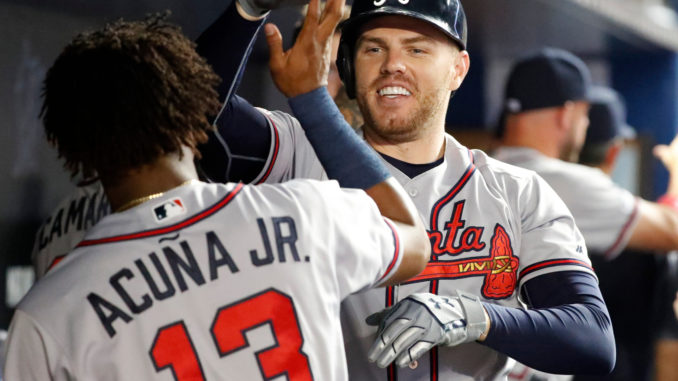
Alex Anthopoulos, 2017-present
The Braves moved quickly to replace Coppolella, reaching outside the organization for former Toronto Blue Jays GM Anthopoulos, most recently of the Los Angeles Dodgers front office. Anthopoulos was a well-respected figure in baseball and worked to restore order and prestige to the organization. Committed to continue the development of the team through the talent acquired by the previous regime, Anthopoulos has presided over the last moves to make the Braves a contender. With one of the youngest everyday line-ups in baseball, the Braves have won two division championships in a row.
Best Transaction: Signed free agent Josh Donaldson as a free agent (2018). Despite a reputation as a wheeler-dealer in his time with Toronto, Anthopoulos has been exceptionally disciplined during his short tenure with the Braves to date; only in the last trade deadline period did Anthopoulos dip into the Braves prospect depth, dealing former first-rounders Kolby Allard and Joey Wentz in separate deals to acquire bullpen help in the 2019 stretch-run. Instead, a hallmark of the Anthopoulos era has been one-year free agent contracts. At the time of the signing, Donaldson’s one-year, $23 million deal was the highest one-year payday ever doled out to a player. Donaldson responded by hitting .259/.379/.521 from the clean-up spot and helping the Braves secure their second consecutive NL East title.

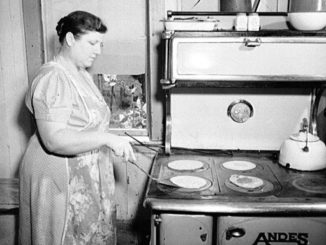
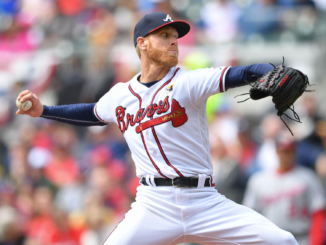
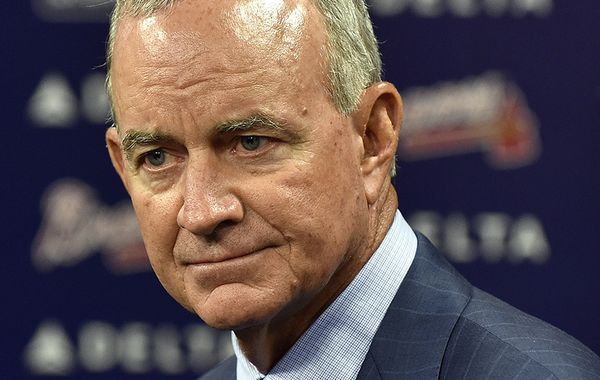
Leave a Reply